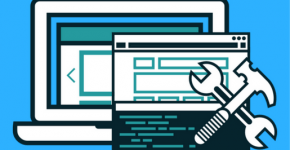Best PHP Security Practices
The Battle for technological supremacy keeps on happening day in and day out! PHP is one of the best programming languages available around the world. And one should never forget that PHP has the ability to develop any vague, weird idea into reality. No wonder, it is used by millions of websites including Facebook, Tumblr, Wikipedia, Slack, and so forth.
Now I won’t be focusing on what PHP is and why it is important and how it is beneficial. Because this information is something that can be found anywhere on the internet. The following post simply focuses on why PHP security shouldn’t be neglected at any point in time and what are the best PHP security practices to take into account in 2023.
The Need for PHP Security
As mentioned above, in today’s time PHP over the years has remained the backbone for almost every website. And that’s the reason why the security aspect shouldn’t be ignored. Of course, PHP is one such platform that comprises high-end security but the bad guys are getting better by surpassing common threats such as cross-site request forgery, SQL injections, and data tampering.
Even though PHP is one of the most powerful languages, and responsible for the success of 10 million domains, PHP cannot be exceptional especially when the bad threats are increasing day by day.
Further below I would like to provide a small yet crucial checklist featuring some of the top issues that might arise while conducting your PHP app development project.
- Cross-site scripting
- Injections – SQL injection, Directory traversal, command injection, code injection
- Cross-site request forgery
- Public files
- Passwords
- Uploading files
- Session Hijacking
- Remote file inclusion
- PHP configuration – Error reporting, exposing PHP version, remote files, session settings
- Using HTTPS
- Others
Security issues, attacks, and vulnerabilities are never-ending. In fact, they will continue to grow every now and then. So what next? Well, further below I would like to mention some of the best PHP security practices to take into account. An insecure web application offers hackers a fair chance to take valuable data, especially in regard to client information or credit card details. So don’t let them do it!
Top PHP Security Practices to Take into Account
1. Update PHP regularly
One of the best security practices that every software developer must take into account is to keep the website updated at regular intervals. For example, if you are not using PHP 5.6, then it’s time to update to PHP 8. In addition, here PHP developers must think of updating the code and changing certain functional logics, for instance, password hashtags. Some common yet crucial tools include PHP compatibility checker, PHP MAR, and PHAN.
See This Also: Most Popular Trustworthy PHP Development Companies
2. Cross-Site Scripting (XSS)
Now you should be knowing XSS is one of the common vulnerabilities and a malicious web attack where an external script is injected into the website’s code or output. Most of the bad guys use this attack to steal all the information, credentials or cookies, and so more! So when the attacker passes code such as <script>alert(“XSS”);</script>. These types of codes when injected can be quite damaging.
Fortunately, these types of attacks can be prevented.
- First and foremost, all external data must be well-filtered. Yes, if all the incoming and outgoing data is filtered then most of the XSS attacks can be stopped right away.
- Second, PHP is one such technology that comprises a wide range of functions. Use them! Try using htmlentities(), utf8_decode(), and strip_tags() to save your time and energy.
- Third, use a strict naming convention. By doing so, you will be able to create a difference between filtered and unfiltered data.
3. Secure Your Web Server
Another crucial practice that must be done is securing your web server. After all, you must take adequate measures to protect your website from unnecessary, irrelevant, and dangerous attacks. Also, ensure that all the unnecessary services are disabled and you have set the file permission correctly. Try using as much fireblock as you can to avoid unwanted traffic. And of course, keep monitoring for any suspicious activity.
4. Use SSL/TLS
For those who have no idea what SSL or TLS is, it’s more kind of a secured protocol that is highly considered for encrypting traffic between the web server and the user’s browser. Now I am sure you must have heard of eavesdropping. SSL and TLS must be considered especially while transmitting all types of sensitive information.
See This Also: How Can An SSL Certificate Save My Website From Cyber Theft
5. SQL Injection Attacks
This one seems to be pretty common in PHP scripting. One single query can compromise the whole application. The attacker tends to alter the data, especially when passing the query. Try using ORM such as doctrine or eloquent.
Conclusion
So that’s all for now! Of course, PHP security is a pretty vast topic and security-based loopholes are something you will find sooner or later so better to avoid them in advance.
I hope you enjoyed reading the post and most importantly you did find this piece of information worth sharing with your peers. Even if there is something that you don’t understand especially in regards to PHP security issues or its top practices to take into account, be it some query or doubt, feel free to mention them in the comment section below.





